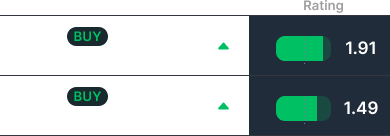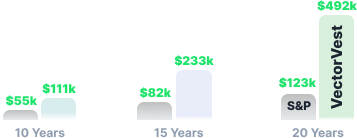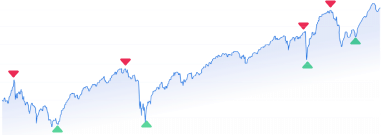by Leslie N. Masonson, MBA
Sector rotation is the practice of ascertaining and purchasing market sectors that hopefully will produce market-beating returns. The problem is sectors fall in and out of favor, similar to the changing cycles in small-caps, mid-caps, and large-caps where their dominance ebbs and flows, for months or years at a time. Sector strength or weakness is due to a number of factors, including economic conditions, financial trends, Federal Reserve (Fed) policy, government regulations, competitive industries and practices, disruptive technologies, and political instability and controversies, both local and national.
Once a sector starts moving upward from a depressed or low point, the uptrend and momentum can last for months or years. One recent example is the outperformance of oil stocks over the past 18 months, leading the energy sector to the top of the rankings scoreboard. Research has shown that about 50% of a stock’s performance is due to its industry and sector linkage, as all boats rise and fall together. Think about the semiconductor industry and the outperformance of its components since November 2022.
Before delving further into the details, let’s review the beginning of the sector fund history. Fidelity Investments is the acknowledged pioneer in the sector arena, introducing five select sector mutual funds on July 14, 1981, with the following tickers: FSPTX (Technology), FSPHX (Healthcare), FSENX (Energy), FIDSX (Financials), and FSUTX (Utilities). Later, two more were introduced in 1984 – FDLSX (Leisure), and FSDAX (Aerospace and Defense).
These funds had certain fees and strict limitations on day trading. Fidelity introduced more select sectors over the years – 20 select sectors in 1985, 6 in 1986, and 1 in 1989. In total, there are now 42 select sector mutual funds. The average expense ratio for all these funds is 0.86%, and the initial fees and restrictions on trading them have been removed. These 42 mutual funds hold billions of dollars in assets since their inception, have gained widespread acceptance, and offer top-performing sectors when conditions change.
The next major event in sector history was the introduction of sector ETFs. On December 16, 1998, State Street Global Advisors (SSgA) introduced its nine Select Sector SPDR ETF Funds. They simply divided up the S&P’s 500 stocks into nine sectors. Most investors and traders are familiar with or hold the most popular ones, including XLK (Technology), XLE (Energy), and XLY (Consumer Discretionary).
Two additional ETFs were added since 2015 for communications and real estate, as a few others gave specific stocks to comprise the two latest ETFs. The annual expense ratio of the Select SPDRs is 0.10%, and the total AUM is a whopping $242.1 billion.
Fidelity did not offer its ten sector ETFs until nearly 15 years later on October 21, 2013, with a competitive 0.08% current annual expense ratio. Their total AUM is now $18.8 billion, a very respectable showing. Obviously, in this case, SSgA, being the early bird, won the vast majority of the assets with a 13:1 AUM ratio compared to Fidelity.
The listing below provides the current Fidelity and SSgA most popular ETF sector offerings:
Fidelity Investments Sector ETFs
|
ETF name |
Ticker | |||
| Fidelity MSCI Information Technology Index ETF | FTEC | |||
| Fidelity MSCI Health Care Index ETF | FHLC | |||
| Fidelity MSCI Utilities Index ETF | FUTY | |||
| Fidelity MSCI Energy Index ETF | FENY | |||
| Fidelity MSCI Financials Index ETF | FNCL | |||
| Fidelity MSCI Consumer Discretionary Index ETF | FDIS | |||
| Fidelity Covington Trust MSCI Consumer Staples Index ETF | FSTA | |||
| Fidelity MSCI Real Estate Index ETF | FREL | |||
| Fidelity MSCI Industrial Index ETF | FIDU | |||
| Fidelity MSCI Materials Index ETF | FMAT | |||
|
State Street Global Advisors Select SPDR ETFs |
||||
| Technology Select Sector SPDR Fund | XLK | |||
| Health Care Select Sector SPDR Fund | XLV | |||
| Energy Select Sector SPDR Fund | XLE | |||
| Financial Select Sector SPDR Fund | XLF | |||
| Consumer Discretionary Select Sector SPDR Fund | XLY | |||
| Consumer Staples Select Sector SPDR Fund | XLP | |||
| Industrial Select Sector SPDR Fund | XLI | |||
| Utilities Select Sector SPDR Fund | XLU | |||
| Materials Select Sector SPDR Fund | XLB | |||
| Real Estate Select Sector SPDR Fund (10/7/2015) | XLRE | |||
|
Communications Services Select Sector SPDR Fund (6/18/2018) |
XLC |
|||
Since the introduction of the SSgA ETFs there has been an explosion over the past 25 years in sector ETFs for stocks, commodities, fixed income, industry and themes among others, as well as equal-weighted sectors. Currently, there are 998 sector ETFs valued at $1.24 trillion with an average expense ratio of 0.59%, according to ETFAction.com.
Next week's Part 2 article will cover sector performance and some tips on evaluating these ETFs for purchase.
Want These Types of Insights at Your Fingertips so You Can Win More Trades?
Use VectorVest to Analyze any stock free. VectorVest is the only stock analysis tool and portfolio management system that analyzes, ranks and graphs over 18,000 stocks each day for value, safety, and timing and gives a clear buy, sell or hold rating on every stock, every day.
Before you invest, check VectorVest! Click here to ANALYZE ANY STOCK FREE and see our system in action!
What you should do next…
- Get our latest blogs delivered right to your inbox, subscribe to our newsletter.
- The market moves fast! Get our most current evaluation of this stock with our FREE stock analysis tool.
- Looking for stock picks? Not sure if now is the right time to buy/sell? For a limited time, enjoy the full benefits of a 30-day subscription to VectorVest for only [offer_txt] (usually up to [saving_txt]/month) . Get access to our full list of screeners showcasing our top stock picks that tell you exactly what to buy, when to buy, and when to sell.















